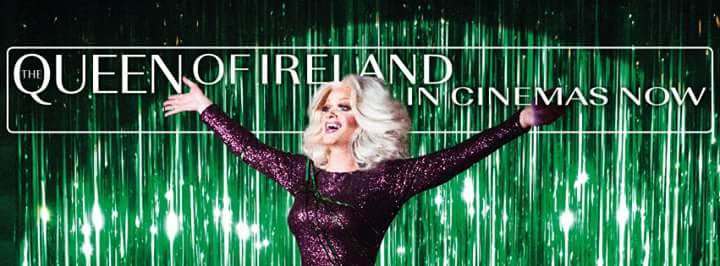Every once in a while a film will come along that perfectly captures a moment, a feeling, an experience. For Ireland in 2015 The Queen of Ireland is that film, immaculately chronicling the change in an Irish society afraid of the different, to one tolerant of the different, to one that is (hopefully) ready to embrace the different, through the ones of one man and his larger-than-life alter-ego.”
When filmmaker Conor Horgan embarked on the journey to bring the life of Rory O’Neill to the big screen in 2010 nobody could have imagined the events of the next 5 years, and how vital it would be that cameras were there to document it all. In May 2015 Ireland became the first country in the world to put the issue of marriage equality to popular vote, with O’Neill and his drag queen alter-ego Panti Bliss a beacon around which the Yes campaign rallied. The momentous occasion, hen the Irish people overwhelming voted in favour of equality gives the film a perfect launching point and provides a destination for the journey on which the audience embarks with O’Neill and Panti.
Growing up gay in rural Ireland, a country that still criminalised homosexual behaviour at the time, O’Neill recalls feelings of isolation and confusion. An engaging and entertaining narrator he talks of adventures with his first sexual experiences, finding himself in college, before moving to Japan to experience a whole different culture. Mixing archive footage with O’Neill’s recollection and the recollections of those who knew through the years the film charts an expert course through O’Neill’s life. In Japan he finds his other self, becoming as he calls it a “giant cartoon woman” now known the world over as Panti. The film documents his return to Ireland following the decriminalisation of homosexuality in 1993, his founding of Pantibar (the iconic Dublin bar), and accelerating towards the moment that would catapult him to world attention.
Horgan wisely chooses to show only some of the furore of Pantigate and focuses instead on “Panti’s Noble Call and the reaction to the video. O’Neill shrugs off the attention, with his honest and hilarious sense of self. O’Neill credits Panti as the one who allows him to “commentate from the fringes, to stand on the outside looking in shouting abuse”, and the symbiotic relationship that he has with his other self is a joy to behold.
The campaign for marriage equality found a face and a voice with O’Neill and Panti, and the film captures its heart. The campaign was about people, not ideas, and Horgan and his editor Mick Mahon deserve real credit for the way in which the use this one man’s journey to tell the story of a people and of a time. Focusing the narrative on O’Neill, with Panti remaining an enigmatic stage presence the film achieves a true warmth. The addition of other voices, from his family, to his friends Niall Sweeney, Tonie Walsh, Mark O’Halloran, Una Mullally, and Declan Buckley, colour the film with their own experiences and take on the man behind the queen, but never distract from the narrative.
The story of Panti, of Rory O’Neill, is a story of Ireland. All involved should be rightly proud of making a powerful, moving document that acts as a time-capsule of emotion and social change. They should also celebrate the fact that they made the funniest film of the year. Go, watch, enjoy, and tell everybody!

